Rommel’s Taxi – The Tamiya Fieseler Storch 1/48th – Kasserine Pass Group Build
A popular decoding of ‘The Rommel Myth' suggests that both sides in the Second War used him as a propaganda weapon, and that he was fundamentally a committed patriot quietly enraged by the restrictions placed upon Germany by The Treaty of Versailles at the end of The Great War, in which he had fought and learned to lead. As such Rommel is seen as a professional soldier, who though never a member of the Nazi party, shared empathy with its leaders as they railed against that ‘harsh punishment' and the uprisings and political turmoil that it caused.
His career path developed from that of a liaison officer for the Hitler youth, through selection to lead Hitler's bodyguard battalion, to becoming the iconic military ‘superman' leading the mighty 7th Panzer Division and Africa Korps, that the Nazis needed to drive their propaganda machine. Goebbels singled him out to appear on many magazine covers and to become the 'pin-up boy' of the party.
By the time the African Campaign neared its end however, Rommel defied direct orders from Hitler as a matter of honour (he wouldn't execute SAS or French Foreign Legion fighters) and in order to protect his men (he wouldn't allow them to ‘fight to the death' on a number of occasions). In the end, having argued openly with Hitler about how to act against allied invasion in France, he paid the price for the collapse in his relationship with the Nazi leadership, which had resulted in either his complicity or an active role in a plot to assassinate Hitler.
The memorial at Blaustein, in Baden-Württemberg, southern Germany, at the site of Erwin Rommel's suicide, is written on the door of an armoured vehicle, in desert colours. It reads: “Here, on 14.10.1944, Field Marshal Erwin Rommel was forced into suicide! He took the poisoned cup and sacrificed himself, to save the lives of his family from Hitler's henchmen.”
When two of Hitler's men arrived at his door with an ultimatum, Rommel calmly explained the situation to his beloved wife and left to take the cyanide capsule as he was driven away. He was buried with full military honours and his family were not persecuted as a result of his actions. The Nazi regime stated that he had died as a result of injuries sustained while being strafed in his staff car during military action.
During the desert campaign the term ‘war without hate' was applied to Rommel's professional approach to battle, and it later became the title of his memoirs. The British Press idolised the ‘Desert Fox' and Churchill was fulsome in his praise of Rommel as a military leader. In 1950 in the third of his four famous volumes on The Second World War he wrote: “He also deserves our respect because, although a loyal German soldier, he came to hate Hitler and all his works, and took part in the conspiracy to rescue Germany by displacing the maniac and tyrant. For this, he paid the forfeit of his life. In the sombre wars of modern democracy, chivalry finds no place … Still, I do not regret or retract the tribute I paid to Rommel, unfashionable though it was judged.”
The modern view of Rommel is far from clear cut. More recently some historians have begun to take steps to dispel the ‘myth of Rommel'. Germany's memorial to Rommel, erected in the 1960s, was built on a hillside overlooking the middle-class town of Heidenheim an der Brenz where he was born. The words inscribed on the white limestone monument described him as "brave" and as a "victim of tyranny". In 2011 a group of protesters carried out a night raid on the memorial and covered it with a banner proclaiming: "No more monuments for Nazi generals". Days before, the memorial had been defaced with graffiti and holed with chisels. In later years the memorial's inscription was changed to reduce the more gushing pronouncements on Rommel's chivalry.
The Jewish Virtual Library refers to itself as ‘the most comprehensive online encyclopedia of Jewish history, politics and culture' and is a major reference source for the history of the Holocaust and the fate of Jewish people at the hands of the Nazis. The JVL directly quotes Martin Blumenson, from his chapter "Field Marshal Erwin Rommel," in "Hitler's Generals":
"His devotion to the profession of arms was in the best tradition of the gentleman. In a total war fought savagely and brutally, he inspired admiration for his treatment of prisoners. He was not tainted by Nazism...With his troops he enjoyed a deep rapport. He cared for them, and although he demanded their best and more, he never squandered them. Without pretension, modest, he tackled all his tasks with clarity, energy, and common sense."
Less forgivingly, The US Holocaust Memorial Museum website reads:
“Yet the extent of Rommel's antisemitism or racism is more difficult to discover. It appears most likely that he chose to overlook the more extreme elements of Nazi policy. It is true that he flatly refused to carry out several criminal orders issued by his superiors, such as the execution of black soldiers and Free French fighters. This does not mean, however, that he was in ignorance of anti-Jewish policy and the “Final Solution.” Through his access to high-ranking Nazi officials, he would have had access to inside information.
Even more problematic was his relationship to a proposed ‘Einsatzgruppen Egypt'. This unit was to be tasked with murdering the sizeable Jewish population of North Africa and to be attached directly to Rommel's Afrika Korps. Its commander, Walther Rauff, had helped design the gas van. Rauff met with Rommel's staff in 1942 to prepare for the arrival of the units. No evidence exists to record Rommel's position on the proposed measure, but he was certainly aware that planning was taking place. While the larger Einsatzgruppen were never deployed, smaller detachments did murder Jews in North Africa.”
While other sources insist that he point blank refused to work with either the ‘Einsatzgruppen' or other units responsible for such atrocities, it has also been reported that Rommel sent prisoners on foot into minefields to find safe paths for his own troops. The argument for his not actually knowing much, if anything at all concrete about the atrocities ordered by the Nazi inner circle is simply that he spent most of the time that these events occurred on battlefields. Even after a significant amount of time spent viewing, reading, and listening to source material on The Desert Fox, for me there remains contradiction and enigma. So, while I still can't pretend to have read enough on Rommel to justify a position, somewhat romantically I hope that he did stay true to the code based on the Prussian ethic of military ‘honour' as history suggests; a code that his more aristocratic peers from the Kaiser's Officer Corps completely failed to exhibit despite their ancestry.
When Churchill stated “Battles are won by slaughter and maneuver. The greater the general, the more he contributes in maneuver, the less he demands in slaughter,” he was not speaking of Rommel, but the quote goes a long way to putting into words the reason Rommel was popular even with the side that later got to write the history of the war as victors.
Rommel's Taxi:
At the start of the Kasserine Pass group build I looked into my modelling cupboard and decided that the only option was to build a kit that I had put to one side for when I'd had improved my skills a little after returning to the hobby. It is Tamiya's 100th offering and is a marvel. Everyone should build one!
Rommel's lack of deference to the leading lights of the third Reich, is suggested, despite the benefit of Hitler's admiration, to be one of the reasons he was supposedly ‘marginalised' by being sent to Africa in a campaign meant initially only to support Italy in Libya. History tells us of his daring feats throughout the campaign, as he went on the attack, often against orders. He soon came to consider the highest ranking Italian leaders to be incompetent but was generally sympathetic to the Italian forces on the ground despite the fact that they nearly did for him twice. Italian Gunners were prone to fire upon any aircraft they met since the RAF had given them a very bad time. They shot down and killed their own Marshal Bagdolio having misidentified his Savoia-Marchetti as a Blenheim. Flying in Fieseler Storch aircraft that he used to move rapidly around battlegrounds he came under fire twice courtesy of Italian armour. On one occasion he set down by an 88mm gun but his Storch hit soft sand and lost a significant portion of undercarriage. The crew and the gunners escaped the British in a hastily commandeered truck. On another occasion he almost landed by mistake next to a column of British vehicles and had to climb rapidly away from the bemused Tommies, with the help of his Storch's relatively large wingspan and 240hp supplied by its Argus As 10 air-cooled inverted V8 engine.
The Storch with its exceptional ability to take off and land in a very small space allowed him to hop from point to point photographing and surveying the developments below.
While the details of this build are to be found in the WIP thread, what isn't there is the way the ‘base plus' eventually turned into a small diorama. Each time I bought some supplies I found myself adding something to the basket that might be used to spice things up a little. In the end it probably got a little too busy! One theme I kept in mind was ‘war with one eye on the fuel gauge'.
Poorly supplied by the Italian and German High Command and fighting in a campaign that ebbed back and forth across North Africa based on lines of supply, Rommel became famous for innovation and the capture of supplies from the allies. After victory at Tobruk and the enforced breakout of the DAK from El-Alamein, Rommel was reduced to fighting a text-book rear-guard, against Hitler's express commands to stand and die fighting. By the time of the Battle of Alam el Halfa Rommel began his assault knowing that in all probability there was not enough fuel to finish the battle. Physically ill, it was decided that Rommel should return from his isolation in North Africa as the Axis objectives were no longer achievable. At that point it is likely he returned home to find out much more about Nazi atrocities, and then to question the sanity of Hitler.
A second theme was therefore the change that came about in Rommel as he was let down by the leadership and began to realise that he was caught up in an historical disaster both in Africa and at home.
So, somewhere on the retreat Rommel is found here in a conflation of some scenes he might have have met during the African campaign, deep in thought having visited a cemetery (which he was known to do when possible, visiting the graves of the fallen from both sides).
Is the presence of the small chapel accurate? I'm not convinced myself, although the Italian troops were said to build monuments from time to time. And even if it never happened this way, it can still be seen as a portent of what was to come for both Rommel and those soon to be fighting on Italian soil.
All that remains is for me to thank everyone who has commented and kept me going on this project. It will come as no surprise that Bernie Hackett had some words of encouragement and wisdom to offer and shared some historical background on The Storch as the build went on. I'll treasure his input. And of course, a huge debt of thanks must be paid by all of us to David Thomas for the igniting the fuse of The Kasserine Pass and 'Africa' group build, and for managing to curate the many posts that have made this a hive of education, entertainment and brotherhood.


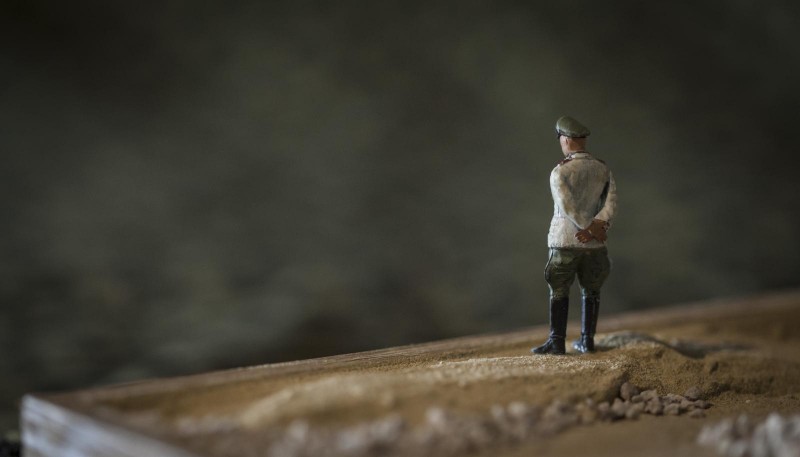
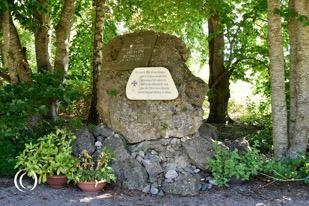
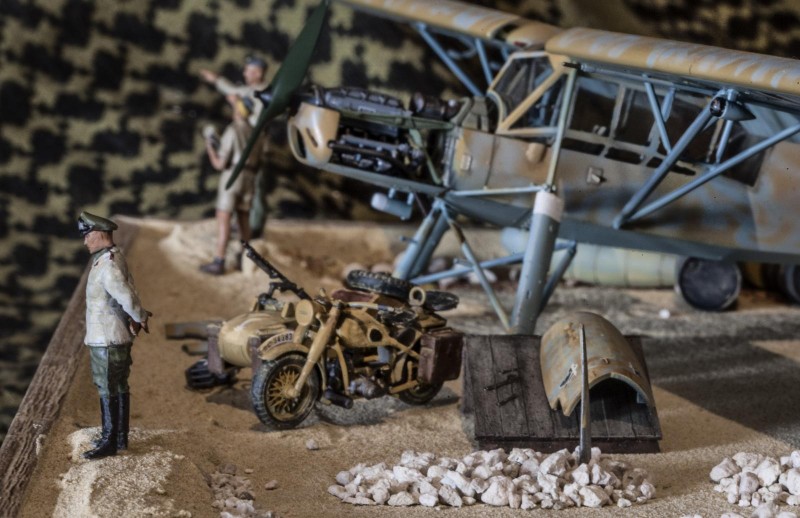
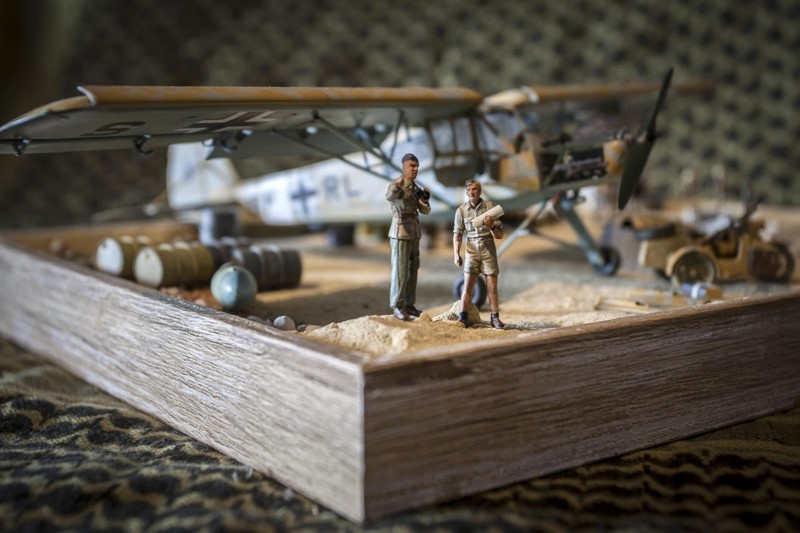
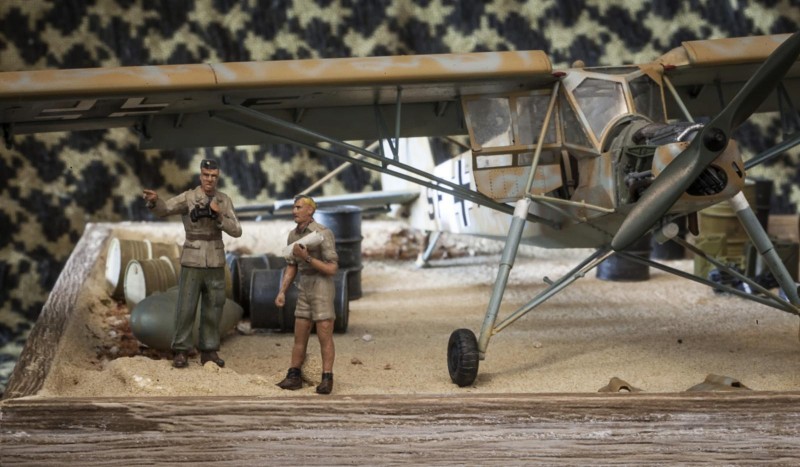


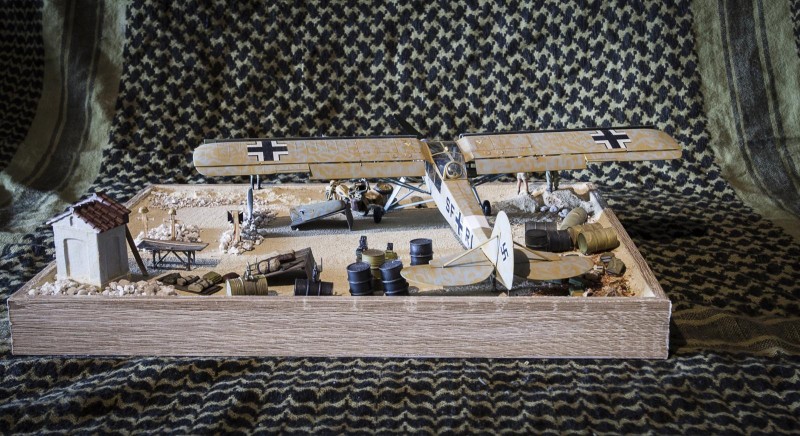
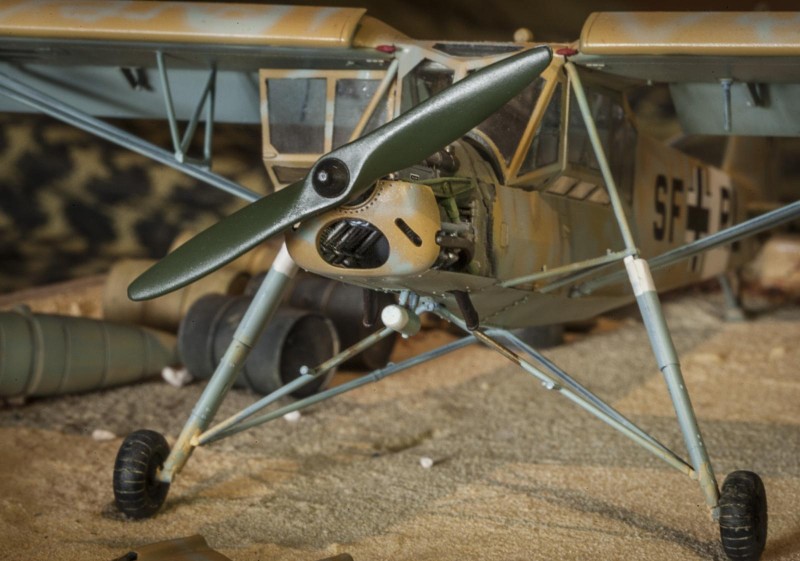

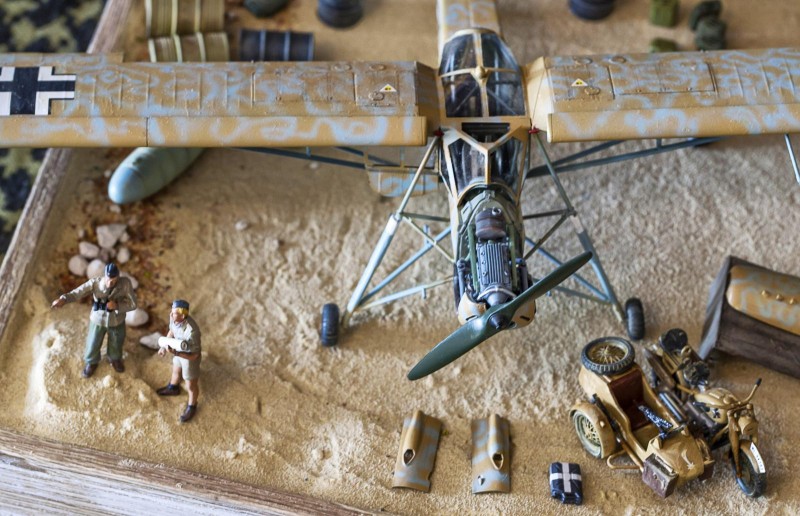
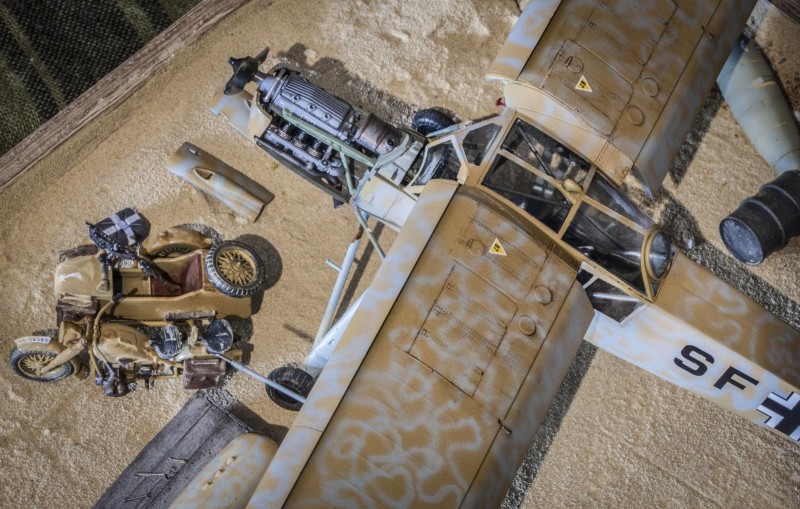
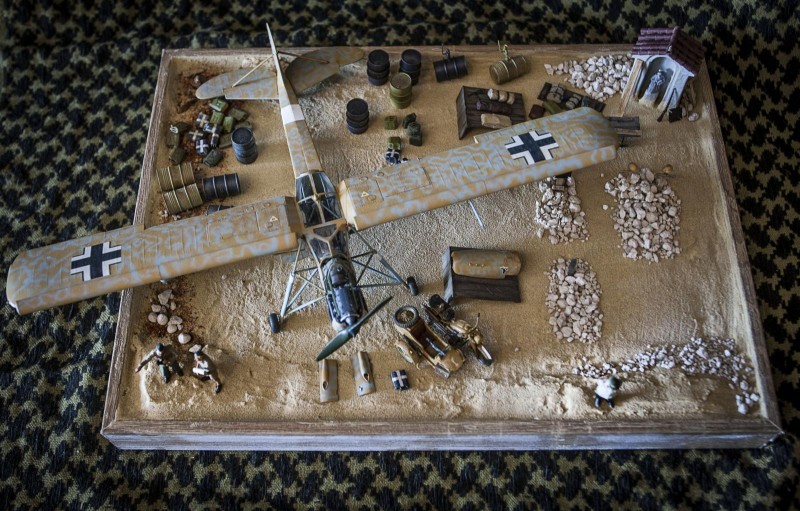
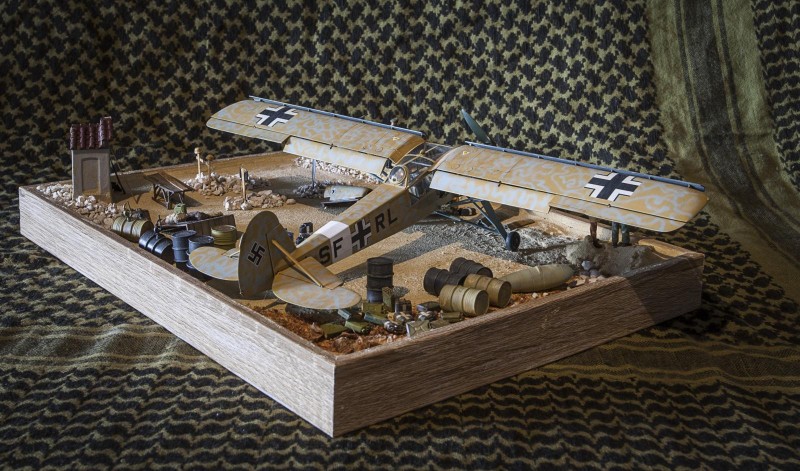

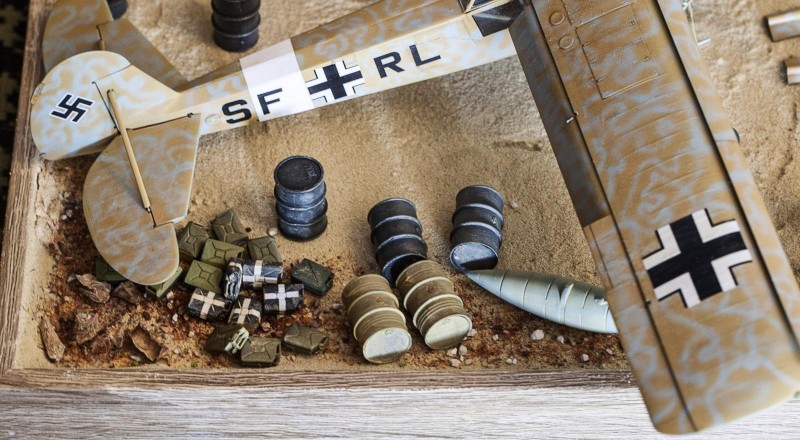


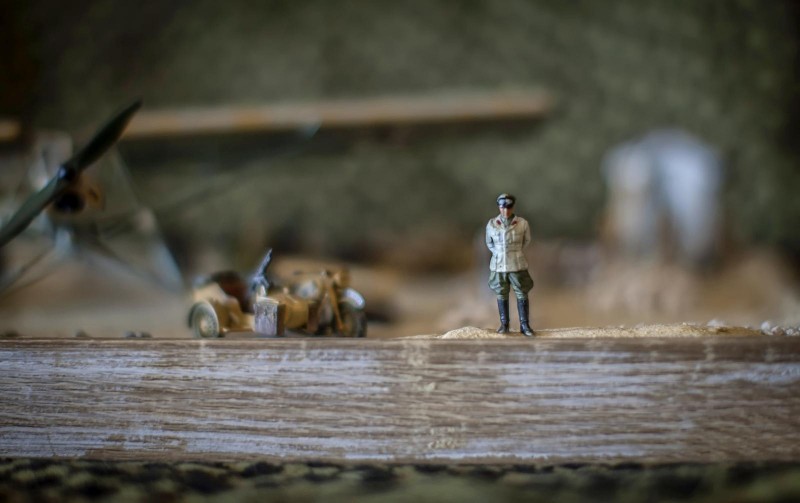
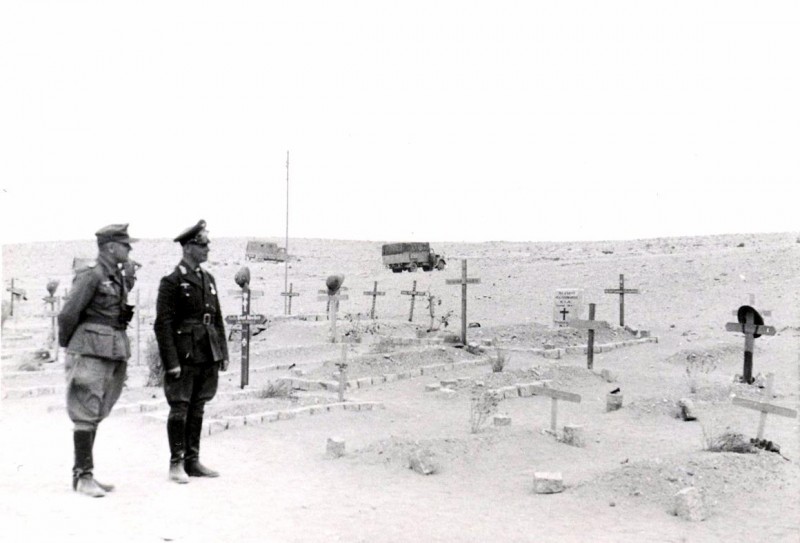
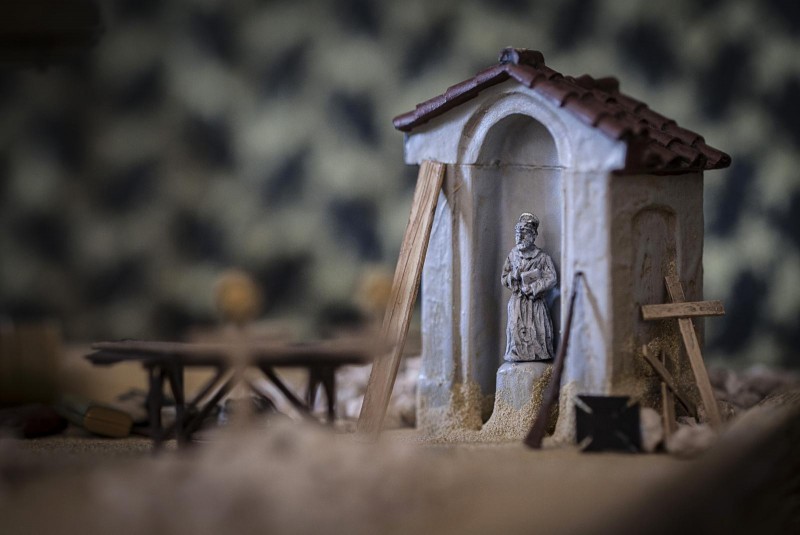
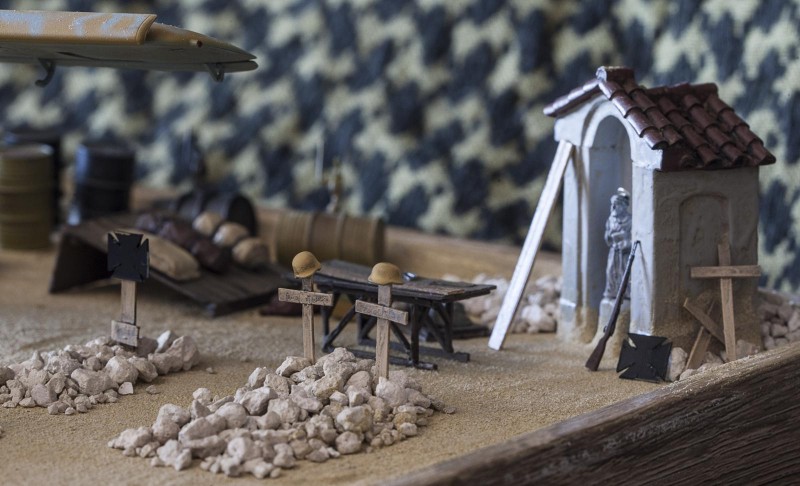
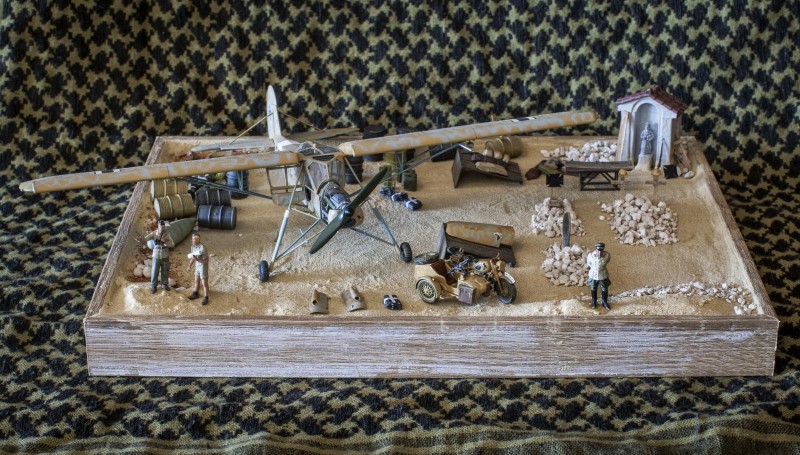
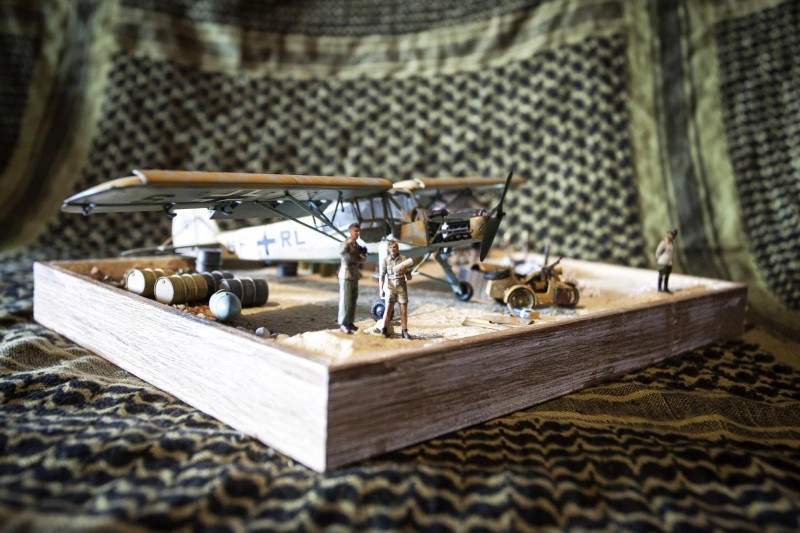


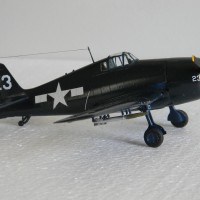


One excellent build and diorama! An interesting background story too. the Storch one of the original STOL aircraft.
Thank you so much Robert - some of the footage I found of Storchs as they take off and land is astonishing!
Great story and build
Thanks, George.
Paul, I am right next to speechless--next to, I say, because being fully speechless would be useless in a medium like this.
Surely this diorama serves as one of the Crown Jewels of the entire Kasserine Pass GB. It has the history, difficult questions, pathos, and just downright incredible modeling. All the details are just fantastic and the Storch itself simply shines. Truly, this choice was a sleeper that surprised me, as opposed to some of the (apparently) more glamorous choices that carried guns and bombs.
Kudos all around, my friend. I am extremely grateful to you for your contribution. Vielen Dank.
Thank you, David. I never much saw myself building a u-boat or a Recon plane this early in my return to the game - you inspired those builds and I enjoyed them and the journey immensely!
Paul,
I am right there with David... I knew this build was going to be something special. I just had a gut feeling about it. You proved my instincts correct... and Bernie would be very proud !
It has been a very enjoyable experience watching your Stork come to life. It comes with mixed emotions that this journey has come to an end... but what an ending it is !
The diorama you built speaks to me... from a lot of different aspects. I think the photos of the Chapel and the graves are what really hit home. Having spent some time in the military and having served in tanks in the desert, I have experienced some of the living conditions these men went through. Luckily for me, no one was shooting at us. One can only imagine the horrors.
From the things I have read about and watched on TV, Rommel was an honorable man as viewed by most persons. However, in today's "PC society", it's not surprising that some bad news emerges about him.
However we also need to remember that history is always written by the victor. I'm not trying to idolize the man or his regime, as we all know about the horrible atrocities that were committed. I have personally visited Dachau, and that place really gave me the creeps ! It had an unmistakable evil feeling there. I can't begin to imagine the horrors that were experienced there.
The article and the photographs of your KP project are simply stunning. Superb would be another great description if I had to choose one word.
Well done my friend. I like this one ... a LOT !
Too much Louis, but I'll take it! Coming from you it means a lot. I was never sure about including the graves but given that one of his activities was to visit the cemeteries of both sides I went for it. It won't be to everyones taste.
I don't know what to say about Rommel. He never came from a background that even qualified him to be an officer, and the saying went 'where you find Rommel, you will find the front'. However, for a long enough time he was close to Hitler and there is a definite school of thought that says he enjoyed the celebrity. Others saw him as a medal hunter, although they probably didn't have the medals he did! I looked at the sites run by those with the most reasons to hate him as one of Hitler's generals and they either lauded him or couldn't quite pin him down. Perhaps I need to look harder!
This whole thing turned out VERY nicely indeed...well done, sir.
Thank you, Craig
Too bad Germany didn't "get the message" at Versailles. Took the worst war ever and a serious occupation by the victorious powers, but finally after 2,000 years of trouble-making for everyone else the Germans have been thoroughly "de-fanged." (My German ancestors come from the "Goethe side" of German culture and like all the really "good Germans" they left by the 19th century and came here - where their descendants eventually went back and pacified the "left behinds" in 1945) Even the bully-boy morons nowadays are seen as foolish bully-boy morons.
Tom, when I read about the work of the Simon Wiesenthal Centre or the 'Book keeper of Auschwitz' being tried at 93, I can't think of anything but justice and support for those bringing mass murderers to book. Since Rommel seems to be the only German Field Marshall to come out of the horrors with anything like 'honour' I'd be really interested on your take on him? Some say the only reason he got away with his criticisms and confrontations with Hitler was the strength of their relationship.
Regarding Auschwitz, you might find this interesting:
https://www.historiography-project.com/video/auschwitz/index.php
You might also find this interesting; it's an interview with a Stuka pilot - in this episode recalling his experience in North Africa.
[Upon reflection I've edited this, 29Mar23. It should have been much more Socratic from the start. Sometimes that's the only thing that works.]
Tom,
I'm a 2nd generation US Army veteran. My father was drafted in '42 and sent to England before D-Day. Like someone else on here I too have been to Dachau (and other places) but I didn't stop learning 30 years ago after I toured there. When I walked through in the early 90s there was a sign which stated: "Gas Chamber: disguised as a 'shower room' - never used as a gas chamber". A quick search on the subject and it seems this sign remained there until at least 2003. I have no idea what visitors are being told today.
"2,000 years of trouble-making"? That's quite a broad expanse across which to make a sweeping condemnation of a people.
Are these the words of someone who is impartial? What if you made the same judgment against another group of people? How would your words be seen then? Out of curiosity, do you think the Germans at Teutoburg were "trouble-making"? There's a very lengthy and detailed essay on this subject by an English historian concerning that event. Have a read. http://www.standin.se/fifteen05a.htm
The essay points out the obvious - that without the German "trouble-makers" there would never have been an England and no English language - including that which you ironically use to attack the Germans "2000 years" later.
If you want it believed that your "German ancestors...like all the really 'good Germans' ...left by the 19th century" are you implying that no "good" Germans were there during the world wars? So no reason to have any concern over firebombing Hamburg, Dresden, Pforzheim and so on? Not even for the kids - because like you say: "all the really 'good' ones had already left"?
This would then mean that you consider non-combatants legitimate military targets. If this is not so you can clarify.
"Bully-boy morons"? Can you explain what this means and/or exactly who it is meant for?
Finally, what "message" were the Germans supposed to "get" from Versailles? That if you agree to a ceasefire on the basis of Allied promises of fair dealing at the peace conference and "the right of self-determination" that you'll get instead an 8 months-long extension of a blockade [by the British] that throughout the war helped kill hundreds of thousands of civilians and after the war killed another 100K, communist chaos in the streets and the loss of a chunk of your country and people?
There's an interesting article on this postwar situation in Europe during this period. It was written in 1920 by someone whose name you might recognize.
The article is "Zionism versus Bolshevism". https://en.wikisource.org/wiki/Zionism_versus_Bolshevism
Pay particular attention to the part where the author mentions Germany. Can you tell us who was "making trouble" there?
I just realized: The guy who designed the P-51 Mustang was - according to you - one of the "bad left behind" Germans... because he wasn't in the batch of "good" Germans who allegedly "all left by the 19th century".
Huh.
Was also wondering...
Is this one of the "bully boy morons" you had in mind? https://youtu.be/R1X21-pUQsw
Paul, for my money this is the complete package. A beautiful build with wide ranging creativity and skill, some accurate and balanced history, and a great underpinning question on morality and ethics of the human 'condition'. And a great Work in Progress to boot.
In my humble opinion A 'benchmark' diorama.
Thank you David, again too much, but I'll take it! I'm not sure about 'creativity', I'll always view it as a spiced up base! The journey was way better than the destination for all the reasons we know exist here on iM!
Hear, hear.
Paul, when I first read your WIP title I never expected the final presentation you show here. A highly creative idea for posing a stunning Storch. That blue squiggle isn’t easy to accomplish, but you did a faultless job here. Fantastic
Thanks a lot Pedro, I enjoy your builds immensely so these comments mean a lot.
Paul that little Storch and the diorama turn into an outstanding build. Great little model with lots of interesting objects around it. Dioramas are suppose to tell a story and yours certainly does in a magnificent fashion. Well done buddy, and I'm confident Bernie certainly would have enjoyed seeing it.
Thanks so much Tom, a little while back I reread my own WIP, I noticed that Bernie, among other things had said he’d follow it, and I was gutted I never finished this earlier. Speed is not my thing, I guess. I also noticed all the materials and encouragement that you and Louis and Craig provided along the way. I can’t tell you how much I appreciate it. It is that encouragement that makes us better and leads us to improve!
Paul, what can be said that hasn't already. Simply a superb job! The back story melds with the diorama perfectly. Your workmanship and thoughts combine and are inherent in this piece. Well done!
Thank you James.
Cracking dio Paul.
Thanks Anthony.
Well - I'm so late to the party that anything I say now will seem like plagiarism! Astonishing work of beauty. A marvelous job in creativity and execution. Kudos!
Cheers Greg - far too kind! Thank you so much for all your comments, encouragement and humour on the WIP - a little part of me will always think of the Storch as a flying surf board!
Paul, Excellent work on a beautiful model. your over all presentation is really well done !
Thank you, Terry – very kind.
wow - that is much more than a spiced-up base. it has all the 'great' diorama elements of a story being told, high-quality models, and a 'you are there' feeling to me. great work. i will have to go look at the wip now to see your work on the storch - it is a nice kit and you elevated it to a great level with your dio. very well done!
Thank you so much Paul. I guess I just view dioramas as being more 3 dimensional - although all the photos I looked at showed some fairly flat desert terrain! You can’t land a Storch on the sides of a pass!
Great work on this model, Paul, and a very interesting read. I guess the Storch was the German equivalent to the Lysander.
Thanks George, although there are some still at air shows (I seem to recall), I don’t remember seeing a Lysander fly. In terms of recon and transport their must be significant overlap.
Amazing! I can't hold back the child in me from grinning like a Cheshire cat, while my jaw hits my chest.
Too kind Lawrence - I can't wait to see your next project!
Paul, it's an awesome build diorama. Love the addition of the shrine.
Hope you build more dioramas. You are very very good at it.